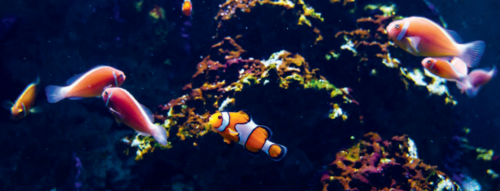As climate change and biodiversity loses force humankind to rethink its relationship to nature, World Wildlife Day 2020 aims to foster a more sustainable human interaction with the biosphere and its precious diversity.
Last year was marked by a series of abnormal climate events that can be linked to human activity, as well as a growing list of instances of human-made harm to the normal functioning of the planet’s biosphere and natural biological diversity.
The evidence of a planetary biodiversity loss crisis ought to be causing alarm bells to ring around the world. According to a report published in May 2019 by the Intergovernmental Science-Policy Platform on Biodiversity and Ecosystem Services (IPBES), a quarter of all animals and plants are currently threatened with extinction in the coming decades unless swift action is taken. For the IPBES, humanity’s intense use of land and sea resources and organisms, pollution of ecosystems and habitats, climate change and the invasion of alien species are among the key drivers of this crisis and some of the biggest threats weighing on the planet’s biodiversity.
Their report warns that, should we fail to act, the continued loss of species would spiral into a positive feedback loop that would only accelerate the rate at which even more species decline and eventually go extinct.
There is consensus on the notion that unbridled human activity harms the habitats and species on which we all depend for our basic needs – energy, shelter, food and medicine, among others. We now find ourselves at a point in which humankind risks permanently jeopardizing its very ability to sustain itself, while also dragging countless other species of the delicate puzzle of life on Earth down with us.
However, there also exists evidence that continued, sensible and sustainable trade can be an incentive for the conservation of wild plants and animals, while at the same time sustaining economies, the livelihoods of communities that live closest to nature and therefore depend on such trade. At CITES, the Convention on International Trade in Endangered Species of Wild Fauna and Flora, we know that sustainable use of wildlife can work for both the species and for people.
Take the examples of the resurgence of the Andean VVicuña or the recovery of Australia’s Saltwater Crocodile: by the 1960s, both had seen their populations severely depleted through uncontrolled exploitation and harvest. After these species were added to CITES Appendices and their trade was restricted alongside heightened conservation efforts, their populations made a solid recovery, reaching numbers that allowed for some sustainable commercial activities to resume by the late 1990s and early 2000s.
Between 2007 and 2014, Andean communities, particularly in the highlands of Bolivia, made an estimated 11 million US dollars from the trade of VVicuña fiber in a remote region where alternative sources of income are scarce. Meanwhile, after being heavily involved in the conservation efforts themselves, many Aboriginal communities have gained employment from the harvest and farming of Saltwater Crocodiles, an industry worth an estimated 74 million US dollars.
As for wild flora, the increased emphasis on sustainability in the harvest of the lucrative South African Cape Aloe plant also shows that trade, sustainable livelihoods, and the conservation of wild species of plants and animals are not mutually exclusive.
Advocating for this complementarity will be one of the key messages of this year’s edition of the United Nations’ World Wildlife Day. Established in 2013 by a resolution of the United Nations General Assembly, World Wildlife Day takes place annually on March 3, marking the anniversary of the signature of the CITES Convention in 1973. The Convention has since then been adopted by 182 UN member states, plus the European Union.
As the principal facilitator for World Wildlife Day, CITES is working with UN Member States and civil society groups, and partners like the UN Development Programme (UNDP), UN Environment Programme (UNEP) among other UN system organizations and biodiversity-related conventions, to hold this annual celebration.
Each year, World Wildlife Day is held under an overarching theme that highlights the role and importance of a particular aspect or component of the planet’s wild fauna and flora – past themes have included “Life Below Water” in 2019 and “Big Cats” the previous year.
In 2020, World Wildlife Day will be held under the theme of “Sustaining all Life on Earth.” This is meant to provide a platform to celebrate wild fauna and flora as crucial components of the world’s ailing biodiversity, and to raise awareness of the threats they face. It also presents an opportunity to bring together stakeholders from governments, civil society and the private sector on a path that can both guarantee the long-term conservation of endangered species, while also striving for sustainable models of interaction between humans and nature that can preserve our economies and livelihoods.
We know that the vast array of interactions among all components of Earth’s biodiversity is what has made the planet habitable for all species, including humans. Today, we face the immense challenge of ensuring that this historic interplay can continue in a way that our own needs are met without endangering the sustainability of the many lifeforms with which we share this planet on sea, land and air.
On March 3, CITES and its partners at UNDP, UNEP, the Convention on Biological Diversity (CBD) Secretariat and Jackson WILD will team up to host the World Wildlife Day celebrations at the United Nations Headquarters in New York.
This year’s World Wildlife Day will also be a part of what has been dubbed the ‘biodiversity super year’: throughout 2020, several high-level events will tackle issues affecting the planet’s biodiversity and advocate for efforts to conserve it. This presents all organizations involved with a unique opportunity across multiple and major forums to drive the conversation towards the transformative progress needed for the conservation and sustainable use of wildlife, as a component of biological diversity, in all its richness and diversity for current and future generations.


